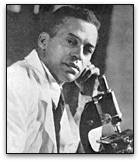 The project was one of those super top-secret things, and all I can say is it involved a great deal of money. It went all the way up the food chain to the very top. Even the CEO got involved. They kept saying the project would happen, and just as I and the other folks involved would get things ready, the visit would be postponed at the very last moment. Finally the project fell through completely and was cancelled.
The project was one of those super top-secret things, and all I can say is it involved a great deal of money. It went all the way up the food chain to the very top. Even the CEO got involved. They kept saying the project would happen, and just as I and the other folks involved would get things ready, the visit would be postponed at the very last moment. Finally the project fell through completely and was cancelled.If I tell you any more about the project, they’ll chop off my head. I’d rather like to keep my head. I’d be a lot less handsome without it.
So after the project was cancelled, I finally went and cleaned off my bench and refrigerators, and handed everything over to the lab rats who really needed them. In the process I threw out years worth of needlessly-archived samples and reagents.
This was a surprisingly poignant action. Too many of the samples I threw out represented projects that were never finished, or had showed very promising results that could have led to good products that customers needed (and still need), but were “backburnered” due to the politics around that place. It made me reminiscent of the “good ole days” when researchers there were more free to explore novel techniques and develop products they felt were useful. Now projects have to go through too many committees, bureaucrats, and profit/cost projection studies before you can do any significant experimentation. That just kills innovation. Doing novel research requires some initial exploration. This is one of the reasons I left R&D at that company. All I do with the R&D folks now is advising on projects.
So I left my bench sparkly clean and walked away saying (as I have hundreds of times) how much more I love my new position. I don’t growl as much any more.
Addendum (3/3/08): Speaking of good projects killed by politics, today I was in a think-tank meeting populated with R&D scientists, product managers, and even a couple directors, to plan out the next year’s R&D activities and new product development in a particular product niche. One of the most promising product target areas turned out to match a product I led development on back in 2004, but was killed due to politics – by one of the very people in that meeting. It was satisfying to see him eat humble pie as I pointed out how the product would meet the necessary criteria and how he and others had killed it. To think, we’ve lost out on more than three years of potential sales on a product that currently has no competition in the marketplace! At least I have the satisfaction of knowing my hard work may not have been for nothing, and the product might still be released.
Image taken from HERE.










